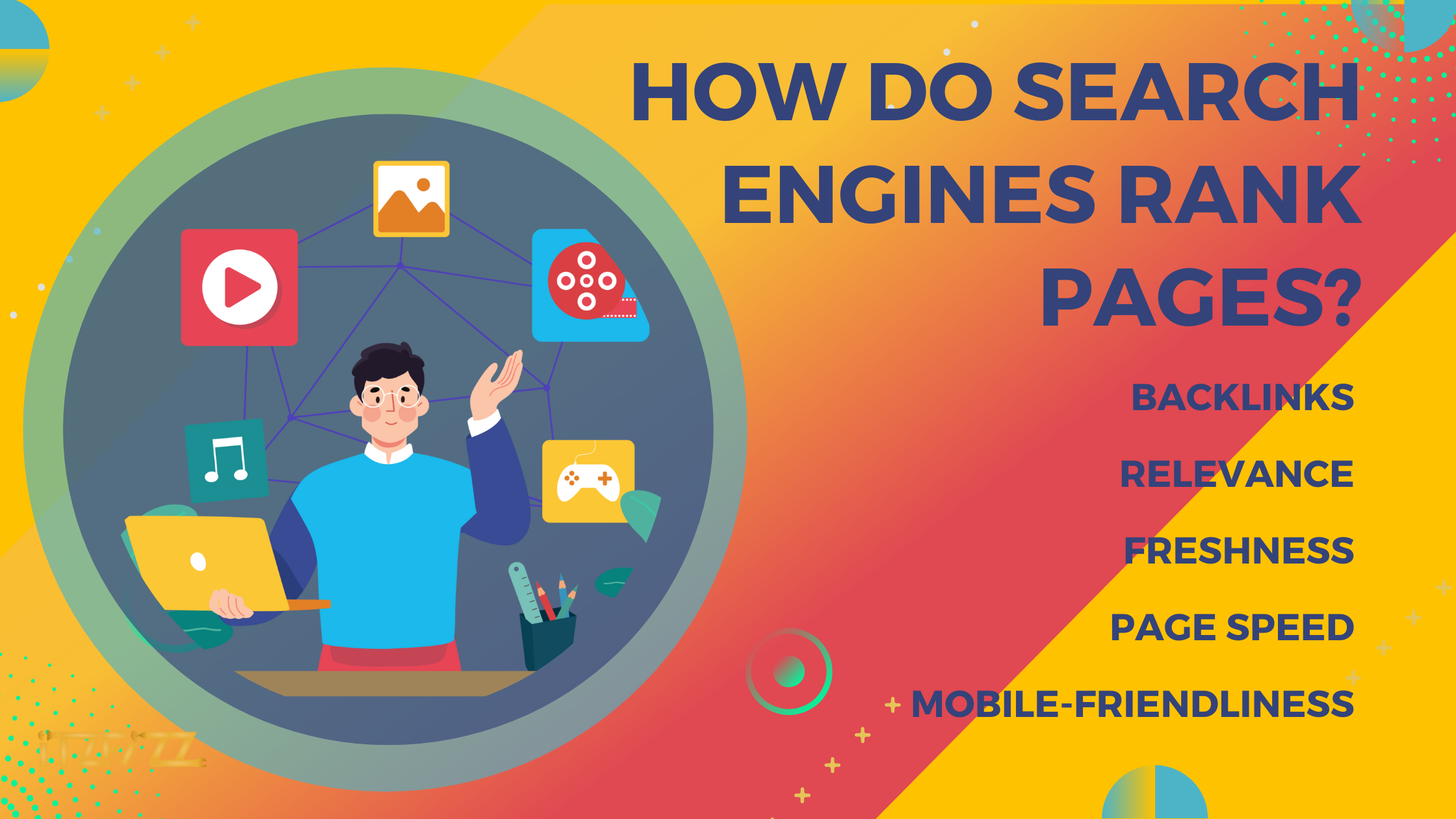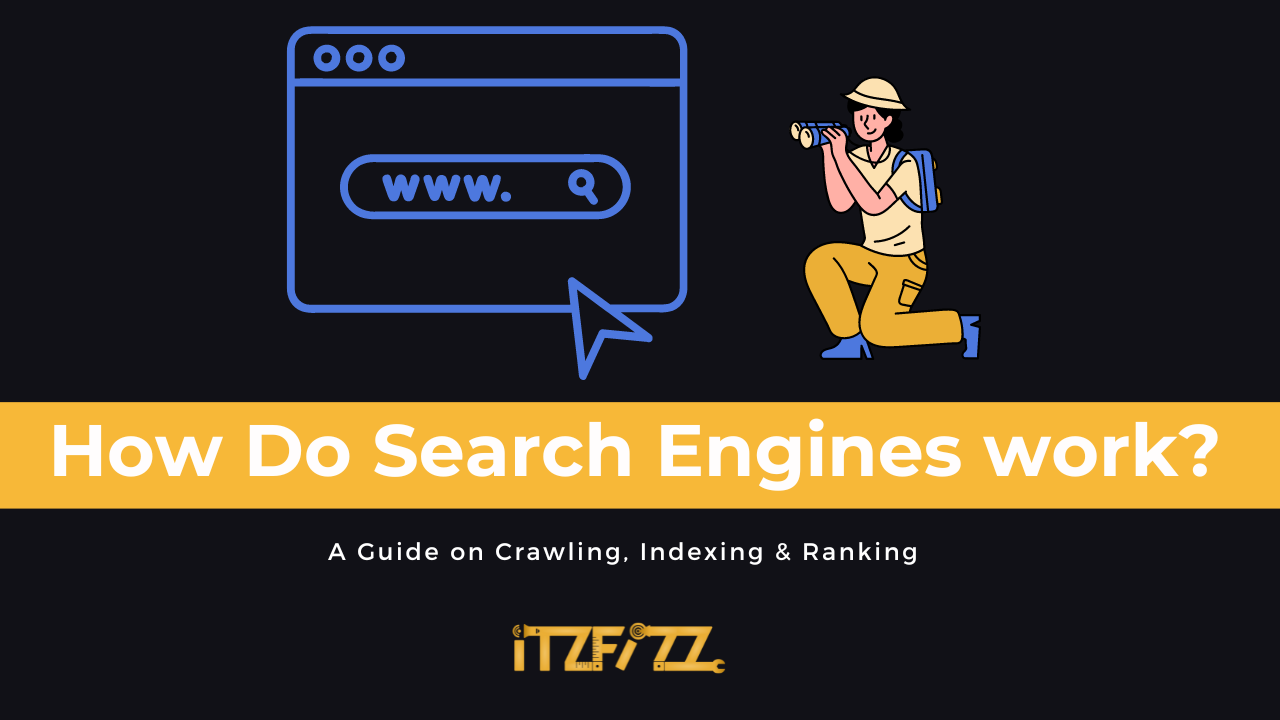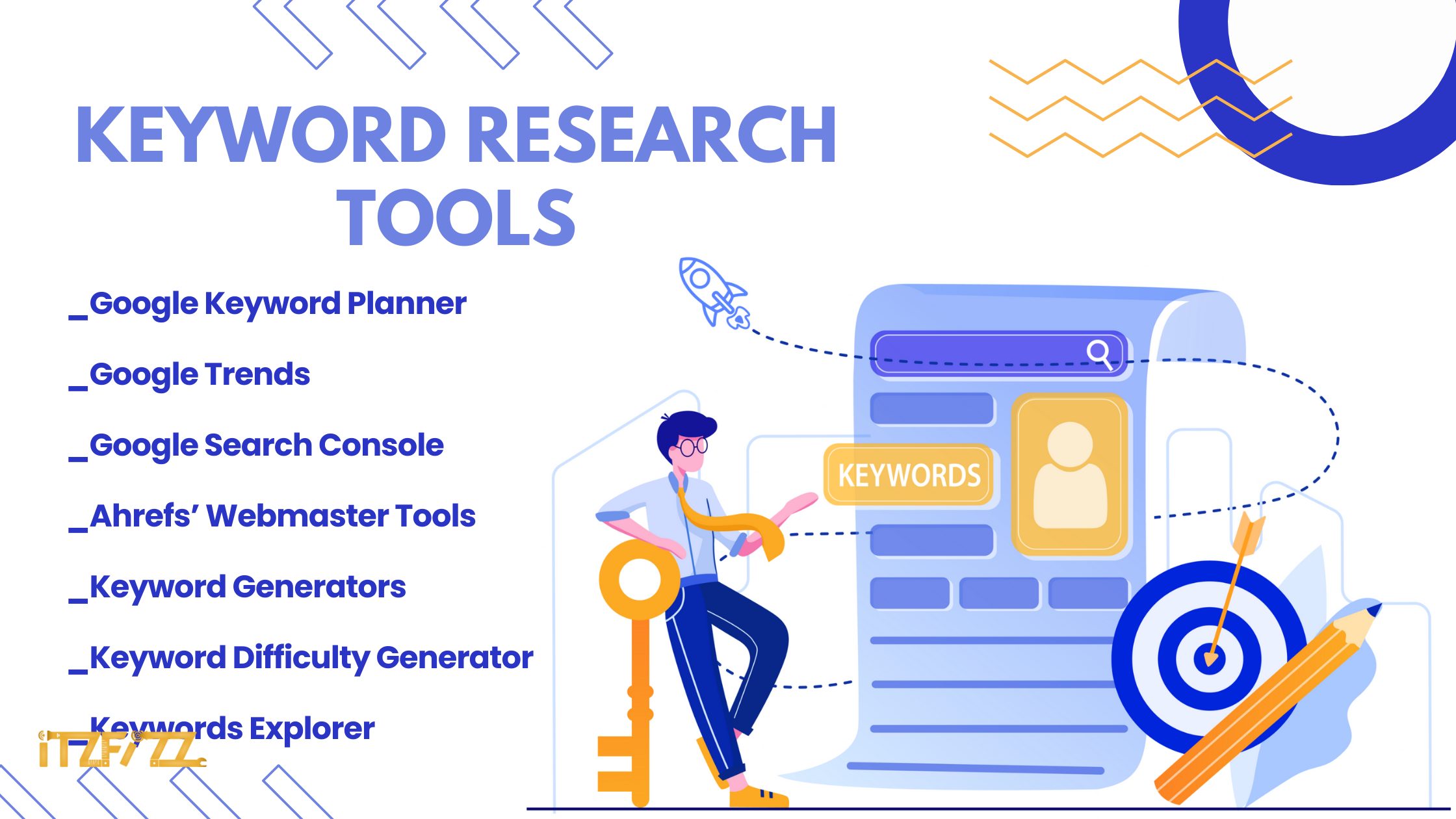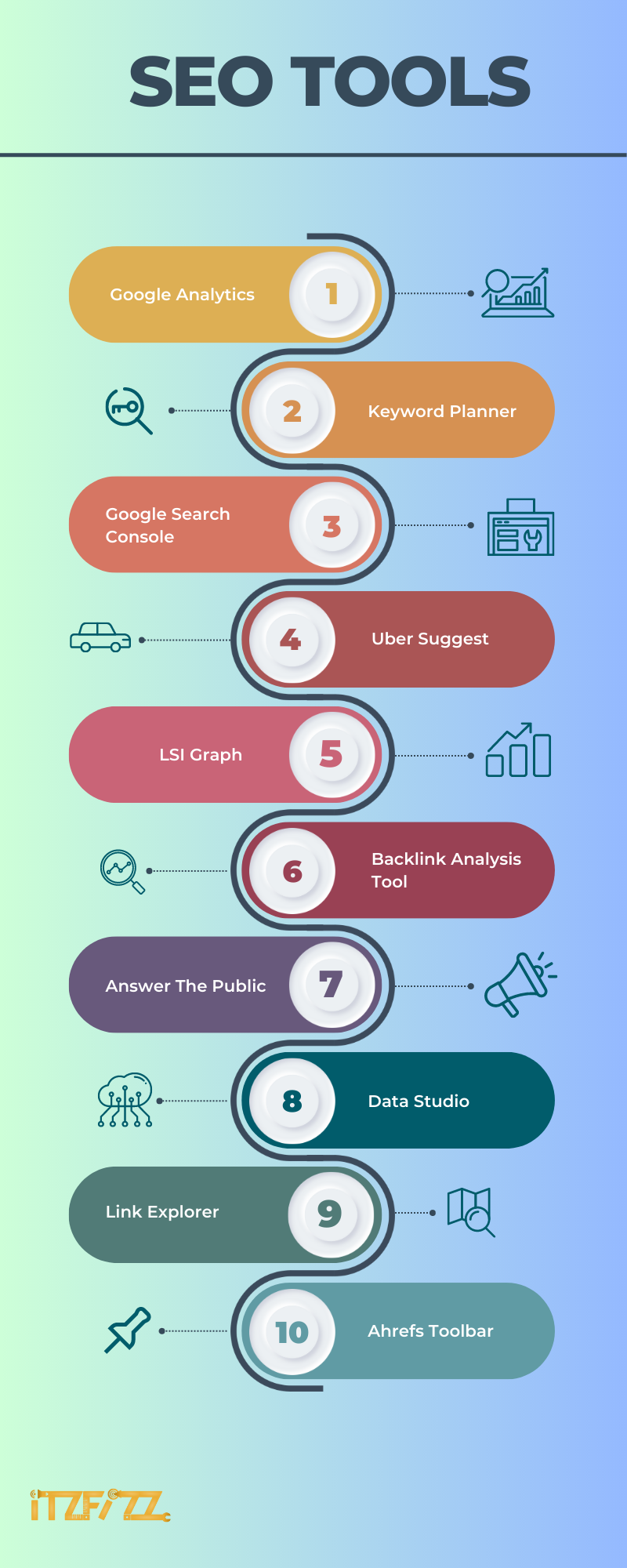Table of Contents
- What are search engines?
- What is the aim of search engines?
- How do search engines make money?
- How do search engines work?
- How do search engines rank pages?
- How do search engines personalise search results?
- Conclusion
- Frequently Asked Questions
Internet search engines work continuously, collect information from the world’s websites, and organize that information to make it easy to find.
The process is simple from the outside: Here you type in a keyword, and you get a list of relevant pages but there are a few more steps that allows Google to show relevant results.
Let’s begin with the basics:
What are Search Engines?
Search engines are the tools that allow a user to search for a query. The content on SERP is then matched with the most relevant results.
Major search engines like Google, Bing, and Yahoo consist of two main parts:
Search index. A search index helps users find information quickly on a website. It is a digital library consisting of information about web pages.
Search algorithm(s). Search algorithms are computer program(s) that rank matching results from the search index
What is the aim of search engines
Web directories often change their ranking algorithm (the program that ranks the results) to improve user behaviour.
Every popular search engine aims to understand the way users search to show them the best answer to their search queries typed on the search bar. This means giving higher priority to the highest quality and most relevant webpage of a website.
How do search engines make money?
Google provides two types of search results:
1. Organic search results
This comes directly from the search index and you don’t have to pay anything here. Search results are listed based on relevancy to the keyword.
2. Paid search results:
This comes from advertisements for which you need to pay. Often referred to as Google Ads or Adwords
Whenever a person clicks on a paid search result, the advertiser pays the search engine. This process is known as pay-per-click (PPC) advertising.
How do search engines work?
Search engines crawl, index, and rank content that helps you to rank your website in organic search results often referred to as SERPs for popular and relevant search terms or keywords.
Google’s search engine crawler works in this 3 step process:
A. Crawling
A crawler is a program that is used by all web directories. The crawler visits a URL(website) it finds, collects all the website’s content, and stores it in the database. It even stores all the external and internal links to the website.
B. Indexing
In this process Google stores and organizes the content found during the crawling process. Once a page is indexed, it is then considered to be displayed as a result of the relevant user query.
C. Ranking
Ranking provides the piece of content that will be the best answer to a searcher’s query or search term. The search results are ordered from the most relevant to the least relevant.
So how does a search engine decide the most relevant result?
Based on the guidelines set forth by Google, these are the few things that are checked
Step 1. URLs
The first step begins with discovering a known list of URLs. This can be done using the following methods:
a. From backlinks.
Backlinks are also known as inbound links. These are the links from one website to a webpage on another website.
Google has an index that contains trillions of web pages. If someone adds a link to one of your web pages by hyperlinking it on one of their articles or pages, Google considers that link a credible source of information.
b. From sitemaps.
Sitemaps contain a list of all of the important web pages on your website. When you submit your sitemap to Google, it helps them discover your website faster. Search engine submission can be easily done by submitting a sitemap to the search console.
c. From URL submissions.
Google also allows the submission of individual URLs through Google Search Console.
Step 2. Crawling
Search engine crawlers are a program used by search engines to collect data from the internet. The crawling of a website begins by downloading its robots.txt.files which contain rules regarding what pages the search engines should or should not crawl on the website.
The robots.txt file may also contain relevant content about sitemaps.
Google crawls the pages and queues URLs for crawling based on a few factors, that includes:
- Page Rank of the URL;
- how frequent the URL changes;
- whether the URL is new or not.
Step 3. Processing
In processing, Google works to understand and draws out relevant information from crawled pages.
In this process, Google extracts the links and stores the content for indexing.
Google has to render web pages to completely process them, to understand how it looks for users.
Step 4. Indexing
The indexing process is adding the processed information from crawled pages to a big database called the search index. The search index is a digital library of trillions of web pages from where you get Google’s search results for a relevant query.
When you type a query into Google’s search bar, you’re searching Google’s index of web pages. If a web page is not present in the search index, search engine users will never find it.
Therefore, getting your website indexed in major search engines like Google and Bing is important.
There is also a situation where a URL is not indexed by Google. This may be due to:
- Robots.txt file exclusions – This is a file that tells Google what web pages it shouldn’t visit on your website.
- Restrictions on a page can notify Google not to index a particular webpage (no index tag) or to index another similar webpage (canonical tag).
- Search engine algorithms declare the webpage to be of low quality, or containing duplicate content.
- The URL shows an error page (e.g. a 404 Not Found)

How do search engines rank pages?
Once the discovering, crawling, and indexing of content is completed, search engines need to perform search engine ranking. This includes web directories to rank matching results with the users’ search intent.
Every web directory has its unique algorithms for ranking web pages. Google has 200+ ranking factors. Some of the key ranking factors are:
1. Backlinks
Backlinks are one of the search engines most important ranking factors.
The quantity of backlinks doesn’t matter because not all backlinks are created equal. It’s even possible for a page with a few high-quality backlinks to outrank a page with lots of lower-quality backlinks.
A good backlink is attributed to the following factors:
- Link authority
Backlinks from authoritative websites create a strong impact on rankings. Authoritative web pages and websites are those that have many backlinks.
In Ahrefs, there are two metrics to estimate the relative authority of websites and web pages:
- Domain Rating (DR): This shows the relative authority of a website on a scale from 0–100.
- URL Rating (UR): This indicates the relative authority of a webpage on a scale from 0–100.
- Link relevance:
Link relevancy refers to how useful and topically similar a website is when they link to your website. Links from relevant websites and web pages are valuable for ranking.
2. Relevance
Web directories determine a webpage’s relevance by looking at whether the webpage contains the same keywords as used in the search query.
Google uses interaction data to evaluate whether search results are relevant to queries.
3. Freshness
Fresh content is content that has been published recently. The freshness of content is a query-dependent ranking factor. Google ranks newly published or updated search results higher
4. Page speed
Page speed is the measurement of how fast the content on your webpage loads. Page speed is also a critical ranking factor.
You can check the performance of all web pages of your website using the Core Web Vitals reports in Google Search Console.
5. Mobile-friendliness
Most of the Google searches happen on mobile devices. That’s why mobile friendliness has been a major factor when it comes to SEO. As 50% of the traffic is driven by mobile search, a lack of mobile-friendliness can affect ranking your websites’ ranking.
How do search engines personalize search results?
Web directories tailor the results for every user because they understand that different results appeal to different people.
A personalized search result is the web search results that have been tailored specifically to an individual’s interests.
According to Google the information such as your location, language, past search history and search settings help them to customize the results to what is most useful and relevant for a user at a particular moment.
Understanding how web directories work is the first step taken for ranking higher in Google and getting more organic traffic. Website owners use Search engine optimization to improve the chances of their websites’ content ranking higher in Google.
Conclusion :
If you have any questions mention it in below in the comment section and I will be sure to discuss it.
Additionally check out our guides on digital marketing, keywords & how to use the keywords in your content.
In summary, search engines are essential resources in the digital age because they help users find pertinent information on the vast expanse of the internet. Their main goal is to efficiently satisfy user queries by offering precise, fast, and customised search results. Search engines use algorithms to rank pages according to relevance and authority; advertising is how they primarily make money.
Additionally, they use personalisation strategies to adjust results based on user preferences. To maximise their online presence and visibility in search results, businesses and individuals need to understand how search engines operate and how they rank pages.
Get in touch with Itzfizz‘s knowledgeable services by clicking this link if you need help with branding, social media marketing, UI/UX, or marketing.








